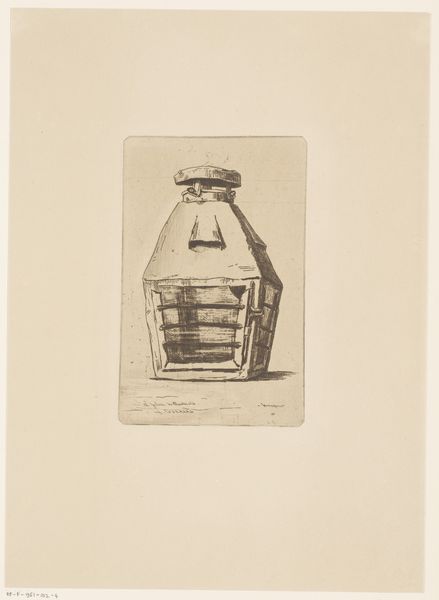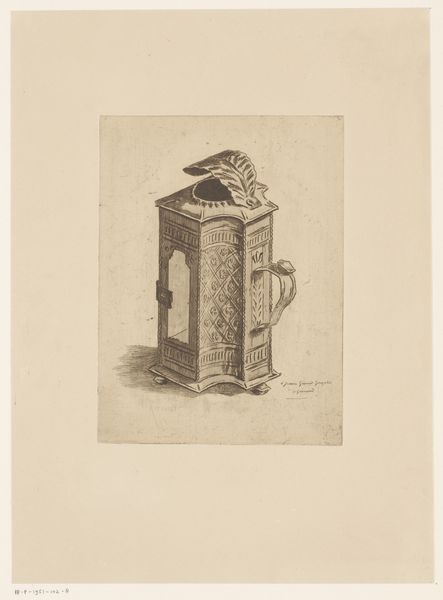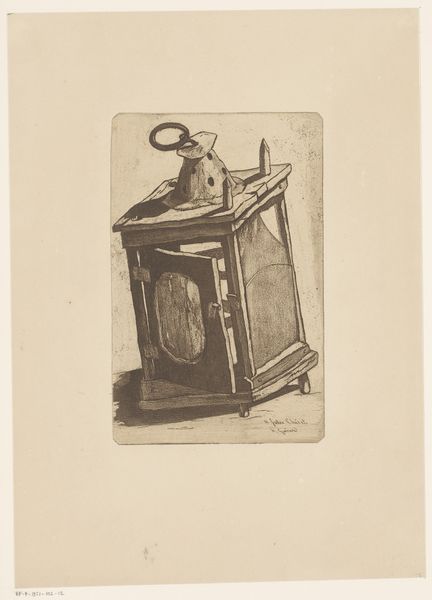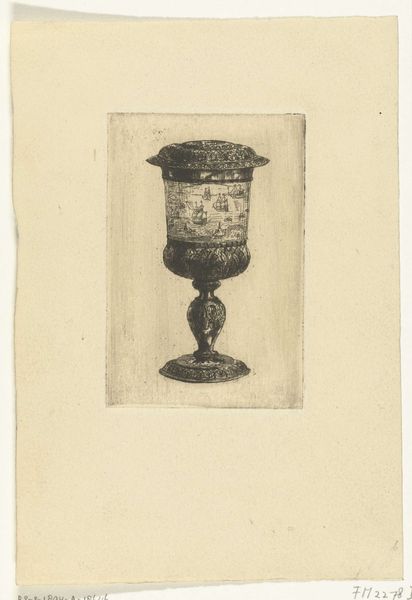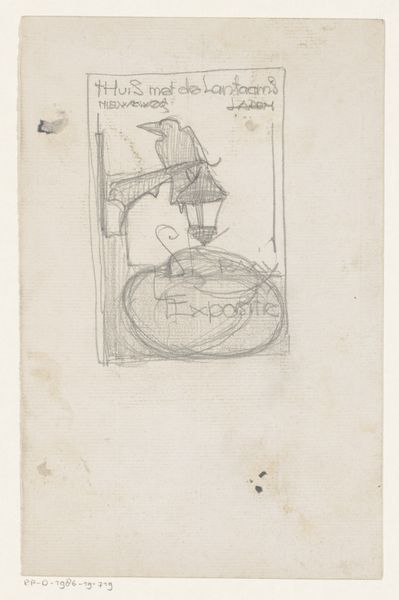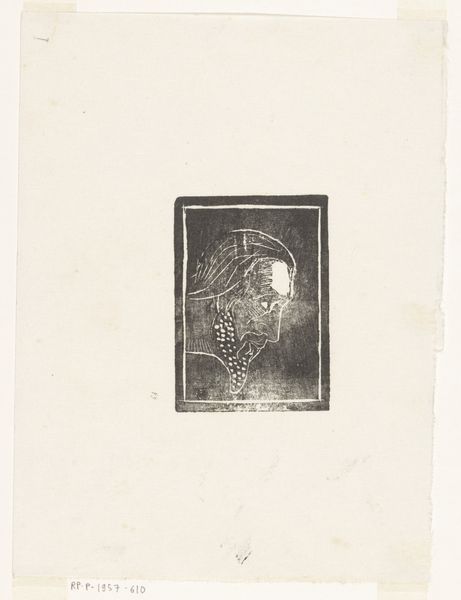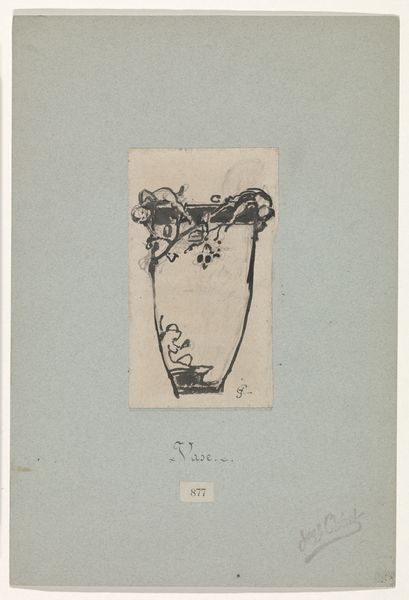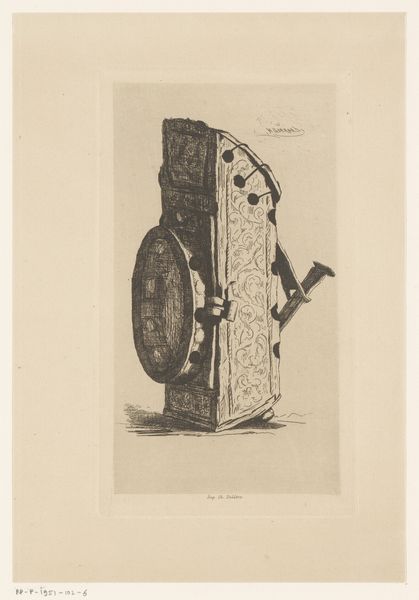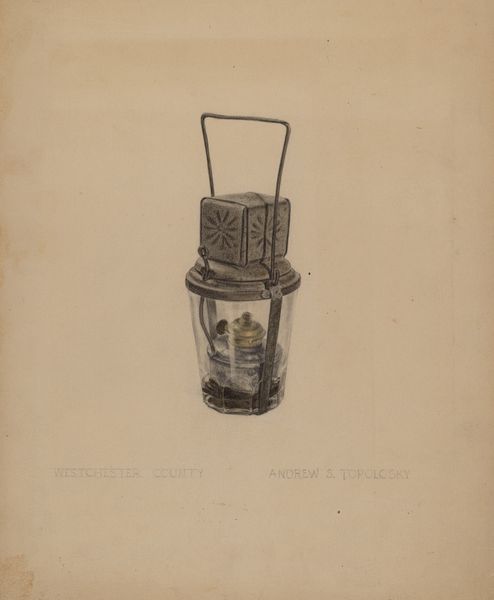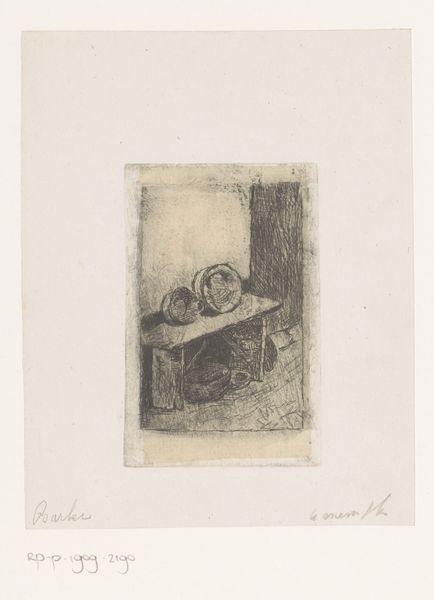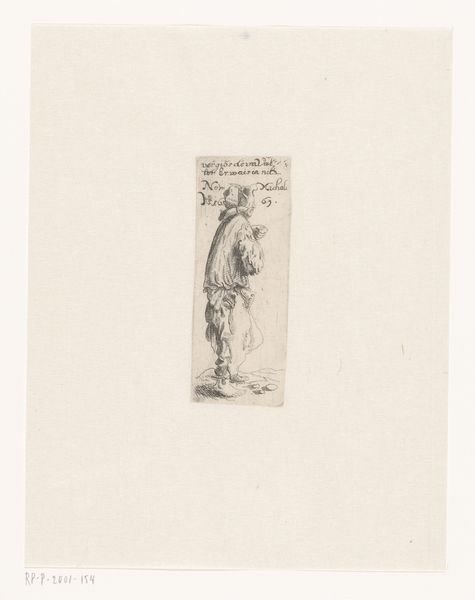
drawing, print, etching, pencil, graphite, engraving
#
drawing
# print
#
pen sketch
#
etching
#
asian-art
#
pen-ink sketch
#
pencil
#
ink colored
#
graphite
#
engraving
#
miniature
Dimensions: height 191 mm, width 149 mm
Copyright: Rijks Museum: Open Domain
Curator: What strikes me immediately is how delicate it feels. Editor: And I think that sensation comes through so clearly in this print by Félix Hilaire Buhot. The piece, made in 1883, depicts an ivory medicine cabinet ornamented with three musicians. You can find the original artifact at the Rijksmuseum. Curator: The contrast between the rigid, boxlike cabinet and the soft rendering in Buhot’s print is interesting. It brings to mind questions around accessibility of medicine historically, as it's tied to both economic and social structures. Who could afford it, and whose cultural remedies were deemed legitimate? Editor: Yes, absolutely. I also notice the depiction of musicians. Are these men engaged in formal performance, or is there perhaps an implied domestic, more labor-intensive production of music? What can the carving and the ivory itself tell us about global trade routes? The material, I would imagine, coming from Asia, Africa, and perhaps South America, involved a significant extraction process to make something like this. Curator: These figures almost appear caught mid-movement. What narrative might these characters embody and what cultural values were attached to those stories in relation to healing traditions and community building in China? We see a cultural exchange being depicted, even subtly. How does the miniature scale reflect both intimacy and the vast, interconnected networks necessary for its creation? Editor: It begs so many questions. And thinking about Buhot creating a print *of* an object, it creates yet another layer of interpretation and labor that's embedded here. Curator: Indeed. It makes me reconsider the social agency of everyday objects and how their representations in art might help reveal previously hidden or overlooked stories of labor, cultural interchange, and symbolic capital. Editor: Well, seeing how the processes involved reflect those complex stories opens up space to interrogate not just aesthetics but histories of consumption, cultural appropriation, and material exploitation.
Comments
No comments
Be the first to comment and join the conversation on the ultimate creative platform.
